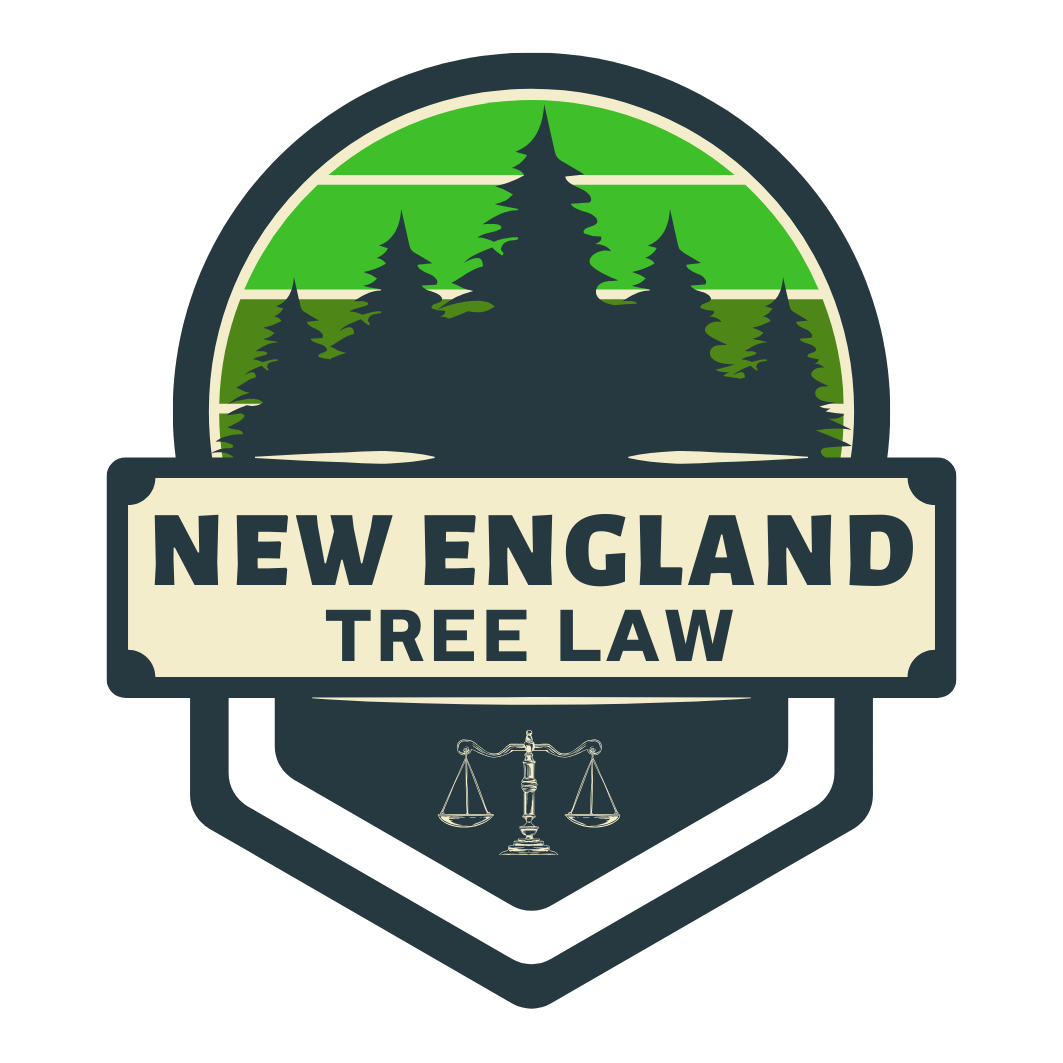
Connecticut
Connecticut timber trespass:
What is the penalty for cutting down someone else’s tree?
__________________________________
Timber trespass in Connecticut can take many forms. “Timber trespass” is the phrase used by lawyers to generally describe cases involving the unauthorized cutting of trees. The umbrella of timber trespass covers intentional criminal acts of timber theft or vandalism, and mistakes or accidents like a neighbor cutting down a tree in your yard because of a misjudged property line.
Tree-cutting that amounts to criminal prosecution is rare in Connecticut. One such case involved the “Door Tree” in Hamden, Connecticut. A man took a chainsaw to a 200-year-old white oak and cut it down. The tree was owned by the defendant’s brother, and the defendant stated that he cut down the tree due to his “hatred” for his brother. The defendant was charged with third-degree criminal mischief and third-degree criminal trespassing, and sentenced to a diversionary program and probation.
Neighbors cutting down trees: a common occurrence
More common timber trespass claims are accidental incidents in residential neighborhoods. Usually, this involves a neighbor who cuts down certain trees thinking they are theirs. Unfortunately, sometimes the neighbor has a misunderstanding about where the property line is, or mistakenly thinks they otherwise have a right to cut the trees. That type of “accidental” or careless conduct is termed negligence or recklessness.
When a neighbor cuts down your trees, the ramifications can be significant. Trees are highly-valued by homeowners for their many benefits, and the sudden loss of your trees can be shocking, traumatic, and painful. But how do you put a price tag on a fully-grown tree?

Legal remedies for tree cutting in Connecticut
Trees in Connecticut can have substantial value. From a legal perspective, the categories of damages available can depend on the legal theories pursued.
Actions for timber trespass have a long history in Connecticut. The first timber trespass statute was enacted in 1726. It provided for an award of twenty schillings for each tree over 12 inches in diameter, and ten schillings for trees under 10 inches in diameter.
The current timber trespass statute in Connecticut is Connecticut General Statute § 52-560. The statute provides that:
Any person who cuts, destroys or carries away any trees, timber or shrubbery . . . without license of the owner, and any person who aids therein, shall pay to the party injured five times the reasonable value of any tree intended for sale or use as a Christmas tree and three times the reasonable value of any other tree, timber or shrubbery.
The statute goes on:
[B]ut, when the court is satisfied that the defendant was guilty through mistake and believed that the tree, timber or shrubbery was growing on his land . . . it shall render judgment for no more than its reasonable value.
In summary, Section 52-560 provides for damages for the “reasonable value” of a wrongfully-cut tree that is cut down accidentally due to a mistaken property line. If the tree is removed or damaged intentionally, a three-times multiplier will apply (or five times for a Christmas tree).
The Connecticut statute “only provides for damages based on the reasonable value of the trees as timber.” Caciopoli v. Lebowitz, 68 A.3d 1150, 1161 (Conn. 2013). That means the market value of the timber, usually measured in MBF (thousand board feet) units. Market value of timber is generally not a large dollar amount for a single tree or a handful of trees, since timber lumber is purchased unrefined and in bulk.
Putting a value on trees in residential settings
The “value of trees as timber” allowed by the timber trespass statute is often not a sufficient measure of damages in a tree-cutting case. This is especially true when the felled trees were not intended for timber harvest, but rather served some other value such as ornamental, privacy, shade, or aesthetics. This is almost always the case when trees on a single-family residential house lot are involved in a trespass case. Although a single oak tree in a backyard, for example, may have a very low “market value” as timber, it may have provided significant benefits for privacy or aesthetics.
The Connecticut Supreme Court has recognized that “an ornamental shade tree upon land available for dwelling houses has a very different relation to the land [compared to trees intended for timber] and [courts] may give it a special value.” Id. at 1157. As such, other measures of damages are appropriate, such as diminution of property value. To pursue such damages, claimants should advance a common law cause of action rather than a claim under Section 52-560.
Diminution of property value “may be determined by the replacement cost of the trees” in question. Jordan v. Biller, No. MMXCV136013438, 2017 Conn. Super. LEXIS 539, at *23 (Conn. Super. Ct. Mar. 24, 2017), aff’d, 184 Conn. App. 848 (2018). However, there is a cap on tree damages measured by replacement cost: the replacement cost cannot exceed the former value of the real estate as a whole. Id.
In the Jordan v. Biller case, the defendants removed approximately 80 trees from the plaintiffs’ yard. An arborist retained by the plaintiffs opined that the replacement value of the trees in question was $400,000. The arborist also estimated that the cost to clean up debris and remove stumps would be approximately $50,000.
The Connecticut trial court in Jordan awarded damages of $446,660 against the defendants. The value of the whole property was over $1 million; thus, the court determined that replacement value was an appropriate measure of damages. Jordan and other cases demonstrate that when trees are valued in residential settings for aesthetics, privacy, and shade, they can have significant monetary worth. To calculate a rough value of the replacement cost of your trees, use our Tree Value Calculator.

Insurance coverage may be available in a timber trespass case
Finally, it is important to note that there is often insurance coverage available in timber trespass cases. To start, tree services and other contractors carry liability insurance.
Additionally, liability insurance is a component of homeowner’s insurance policies. Liability insurance covers “accidental” injuries to persons or property. Thus, if a neighbor (or neighbor’s tree service) cuts down your trees because of a mistaken belief about where the property line is, the neighbor’s homeowner’s insurance coverage will likely cover the loss. Lebowitz v. Amica Mut. Ins. Co., No. NNHCV126027780, 2013 Conn. Super. LEXIS 1773, at *1 (Super. Ct. Aug. 7, 2013).
It should be emphasized that insurance does not cover intentional harm. Oftentimes, victims of timber trespass feel that their case is “stronger” if the perpetrator acted with intent or ill will; ironically, however, there are better odds of being made whole through a settlement if the perpetrator’s acts were an accident (negligence), because insurance coverage will be available.
Conclusion
Trees are a valuable resource. When your trees are cut down without permission, a timber trespass has occurred and you are entitled to receive compensation. It may even be possible to receive an insurance settlement without having to bring a lawsuit.
Tree law is a rather niche practice area. It is important to work with an attorney who is experienced in timber trespass cases and can help you navigate the legal claim process. In the hands of the right attorney, tree-cutting cases can result in considerable monetary settlements.
If you were the victim of a tree-cutting incident, reach out to an experienced timber trespass lawyer to discuss your case.
